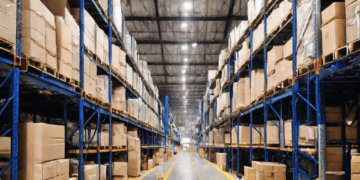Steady Growth Despite Global Challenges
In recent years, the Philippine logistics and warehousing sector has demonstrated remarkable resilience, navigating through the complexities of the COVID-19 pandemic. Prior to the pandemic, this sector was on an upward trajectory, with predictions placing its growth rate between 8.2% and 8.8% from 2018 to 2024. The market was projected to reach a value between Php 970 billion and Php 1 trillion by 2023. These forecasts were bolstered by proactive governmental initiatives, such as the Ease of Doing Business Law and the ambitious “Build-Build-Build” infrastructure program, significantly elevating the Philippines in the World Logistics Performance Index (LPI) rankings.
Navigating Through COVID-19
However, the advent of COVID-19 posed unprecedented challenges, slowing the sector’s growth. Despite these hurdles, the logistics and warehousing industry has proved pivotal, especially as the pandemic necessitated new economic and social protocols, highlighting the sector’s indispensable role in the economy.
Impact of Manufacturing Slowdown
The pandemic’s impact on various industries, particularly manufacturing, has had a ripple effect on logistics and warehousing. With strict quarantine measures in place, the movement of goods was restricted, affecting the manufacturing sector notably. While there was a decline in merchandise exports and imports, there was a notable increase in specific sectors like agro-based and manufactured products. Consequently, manufacturing firms shifted focus to essential goods, adapting their production strategies in response to changing consumer patterns.
Boost from E-Commerce
Contrastingly, the E-Commerce sector has seen a surge. With physical stores experiencing lockdowns and restrictions, there was a rapid shift to online platforms. This shift not only sustained retail operations but also significantly boosted the logistics sector. The growing demand for online shopping, driven by social distancing and remote work trends, has intensified the need for efficient logistics services.
Technological Innovations in Warehousing
In response to this increased demand, there’s a growing consensus on the need for technological advancements in warehousing. Innovations in automation and robotics are expected to become more prevalent, enhancing value-added services and profitability for clients.
Warehouse Lease Rates: Urban vs. Provincial Areas
The warehousing landscape is also evolving in terms of location strategies. In Metro Manila, high land values and construction costs have led to increased warehouse lease rates. This situation is pushing developers to consider more cost-effective locations in provincial areas like Bulacan, Cavite, Batangas, Laguna, Bataan, and Pampanga, where land values are more reasonable.
Future Prospects and Governmental Support
Looking forward, the Philippine logistics and warehousing industry is expected to continue its growth trajectory despite the pandemic. This optimism is supported by significant investments from top property firms in logistics and industrial developments. Furthermore, the government’s role in supporting logistics organizations is crucial for the industry’s advancement. Coordinating logistics responses and offering operational assistance are key areas where governmental support can make a significant impact.
Conclusion
In conclusion, while the COVID-19 pandemic has presented challenges, it has also catalyzed critical shifts in the Philippine logistics and warehousing sector. With technological advancements, e-commerce growth, and strategic location planning, the industry is poised to adapt and thrive in the post-pandemic landscape, reaffirming its vital role in the Philippine economy.
Get the latest supply chain logistics news updates at The Supply Chain Report. Visit ADAMftd.com for free tools related to international trade.
#PhilippineLogistics #WarehousingGrowth #LogisticsResilience #EcommerceGrowth #SupplyChainInnovation #AutomationInWarehousing #LogisticsExpansion #PhilippineEconomy #BuildBuildBuild #LogisticsTech #ProvincialWarehousing #FutureOfLogistics

















